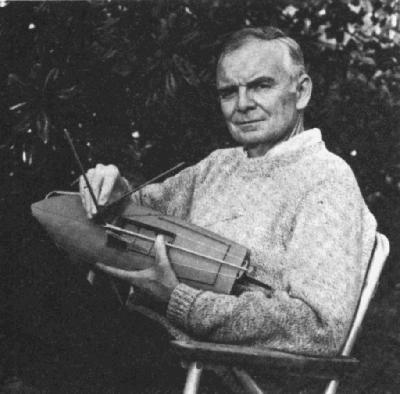Robert
Dance is a fanatic. A fanatic about his art, about details, and naturally,
about the Chesapeake Bay. All of this ia a very good thing because for
many years now Dance has been roaming the Eastern Shore sketching and
photographing the scenery. This activity always results in a painting,
and the latest to focus on the tidewater area is The Residents.

The Residents, alkyd
In The Residents
we see exactly why Dance is regarded as one of the most accomplished
artists to paint in the realist style. He has literally created a
window for the viewer to peer into. There is the foreground and distance
of the painting itself, but there is also the vantage point of the
viewer. These two combine to produce an effect almost like watching
a 3-D movie. You know the canvas is flat, but it looks so real it's
a little unsettling. Obviously, this is no accident. Dance produces
about six to 12 paintings a year, and on a given piece, there may
be 20 to 30 glazes.

Marsh Breezes, alkyd.
Glazing
is one of the techniques he uses to create the illusion of distance.
Objects in the apparent distance tend to be hazed over and are lighter
in color, with ill-defined edges, just as we experience in life. For
objects to appear closer he paints sharper edges and more clarified
colors. The end result is that we look into another world. One with
land, a house, oystermen, geese and most importantly, air and space.
Here, Dance has constructed a scene with an atmosphere so real that
we can breathe the air and walk off into the distance. This sense of
atmosphere is as much a signature of his painting as the Dance name.

Late Pintails, alkyd.
Limited Edition Reproductions Are Available of
'Late Pintails'.
Click on the painting above for more info!
Detail
is another aspect that adds to the overall effect of The Residents.
One reason Dance spends time on the Eastern Shore is to gather reference
on the boats that are in the area. This may be just an excuse to sail
his 17-foot Thistle, but his thorough, accurate renderings leave no
room for doubting his true intentions. He works up a painting using
a combination of on-site drawings, photographs, and his trained eye.
These bits of information are pieced together to depict a given boat
accurately. From experience he knows this is necessary. Dance points
out that. "A photograph is never perfect. There is always something
that's not quite right. Something that's just not working." He often
turns an object slightly, or moves it to an entirely different spot
in the picture.
|
|
|
|
Ira
Hudson Goose, alkyd
|
1936
Ward Canvasback, alkyd.
|
He is constantly
looking for plans of working boats to add to his research files. Sometimes
a particular boat cannot be found, so he builds one to scale. Over
The Sneakbox was painted using a model of a Barnegat Bay Sneakbox
duck hunting boat as reference. Dance constructed the model using plans
prepared by Howard Chapelle, former Curator of Marine Transportation
at the Smithsonian Institution.
 Artist
with Sneakbox Boat Model Artist
with Sneakbox Boat Model

Over The Sneakbox, alkyd
Appreciation
for unerring detail and atmospheric effect in Dance's work indicate
that he'll be back sailing the Bay to search out material for his next
painting. Fortunately, after an eight year hiatus in which no reproductions
were published, Dance is issuing prints of The Residents. The
scene is typical of the tidewater area, and was a favorite when shown
at last year's Waterfowl Festival in Easton, Maryland.

Eastern
Shore Autumn, alkyd. Winner of the 1987 Waterfowl Festival
Book
Cover and Print Competition.
Dance has
exhibited work at the Mystic Maritime Gallery in Mystic, Connecticut,
and at the opening of the new Maritime Museum in Beaufort, North Carolina.
His rendering of a Spritsail Skiff is used in the logo of the North
Carolina Maritime Museum. His work has appeared in several publications
including Virginia Wildlife, Ducks Unlimited, and American
Artist. Dance's work is the collections of several museums and is
held in private and corporate collections throughout the country. His
paintings have been featured in the books: 40 Watercolorists and
How They Work, Painting in Alkyd, and Things Invisible to See.
He lives with his wife, Coleman, in Kinston, North Carolina.
This
article originally appeared in Chesapeake Bay Magazine, February 1987

|

